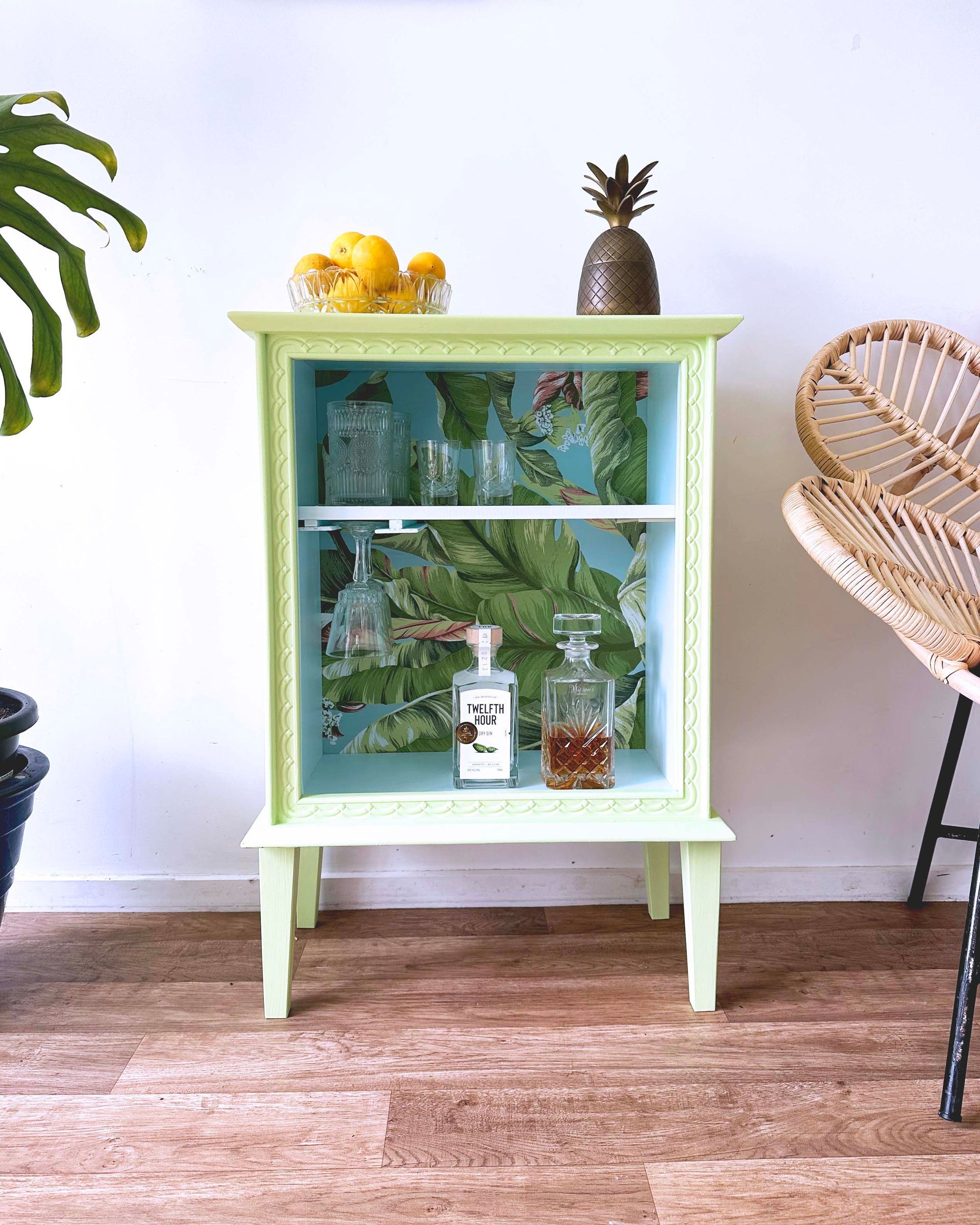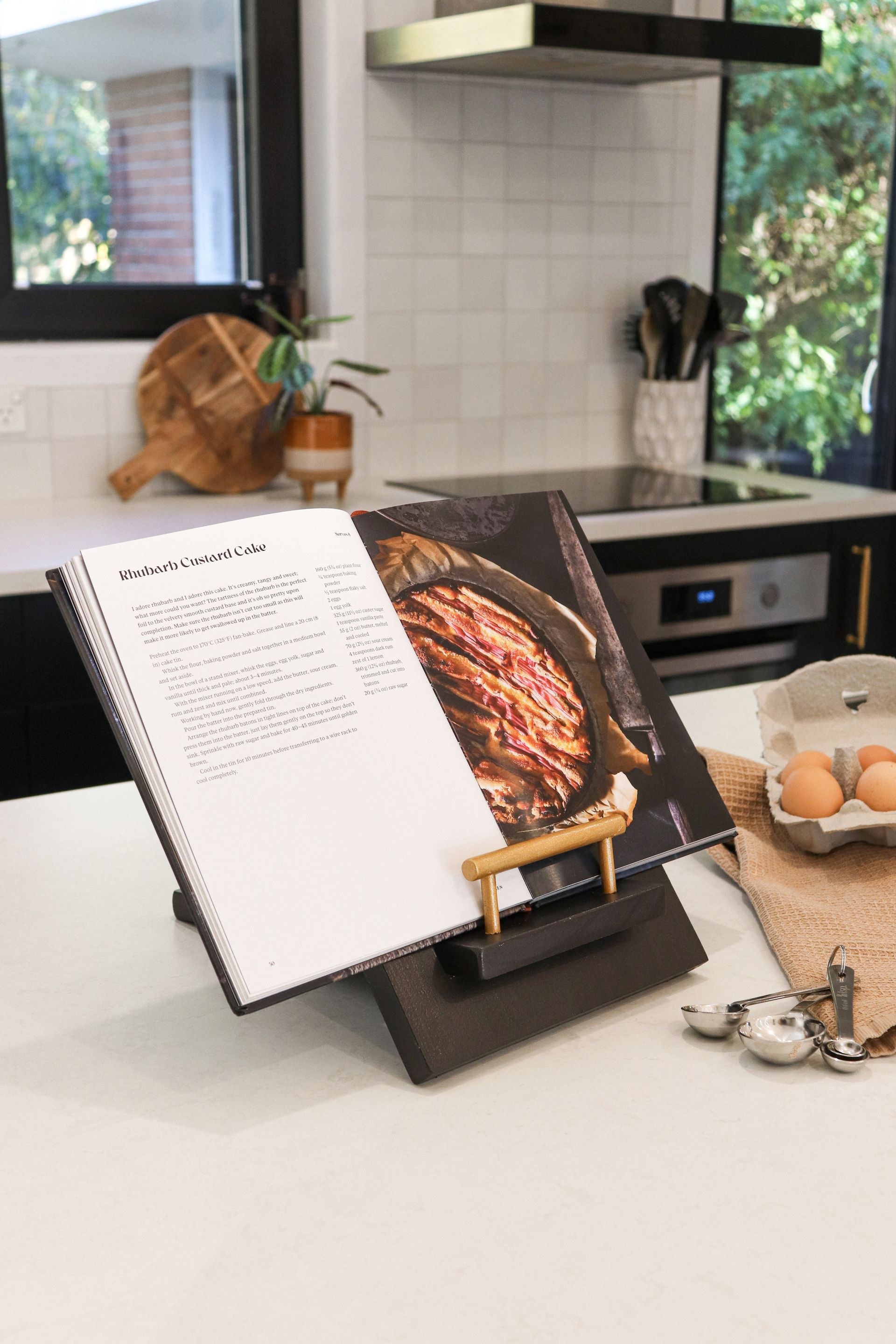Transform an old bedside table into a retro-style drinks cabinet using Resene paint to ensure your fav tipple, glassware and cocktail-making tools are displayed in style. Penny Newton from Crafty Girl Life Hacks shows us how!
What you need:
✱ Medium-grade sandpaper
✱ Electric sander
✱ Cloth
✱ Medium paintbrush
✱ Resene mini roller kit
✱ Resene drop cloth
✱ Tape measure and pen knife
✱ Wallpaper glue
✱ Resene Wallpaper sample – we used Resene Wallpaper Collection AT7070
✱ Wood offcuts to make the glass hanger
✱ Resene Lustacryl semi-gloss waterborne enamel paint – we used Resene Anise and Resene Foam. For a small area and multicolour finish, you could use Resene testpots.
Prepare the cabinet by giving all paintable surfaces a light sand and a wipe clean.
Paint all surfaces, except the back panel, with an even coat of Resene Lustacryl semi-gloss in a colour of your choice. I used Resene Anise for the inside, and Resene Foam for the outside to match the wallpaper. Use a roller for an extra smooth finish, and then touch up the corners with the brush. Allow to dry fully, and give a second coat.
Cut the Resene wallpaper sample to size by measuring the back panel. If you can easily remove the back panel, it makes the job of measuring and cutting a lot easier!
Paint a thin layer of wallpaper glue onto your surface, then fix the wallpaper by applying it to one edge, then gently rolling the wallpaper across. A damp cloth is great to have on hand to smooth down as you go so you don’t get any air bubbles.
Next, try creating a glass rack using two bits of wood. You can buy the wire variety in-store, but they are so simple to make! Take two pieces of wood that are around 0.5–1 cm thick and the width of the shelf, plus two thinner strips that are about a quarter of the width of the wood. Glue the smaller piece of wood in the centre on the underside of the bigger piece, wait to dry, then paint. Repeat for the other piece. Then screw these onto the underside of the shelf so you can easily hang some wine glasses.
I also added some feet to my cabinet to give it some height, and painted them Resene Foam to match.
Display your favourite bottles and glasses, and make a cocktail or two.

Top Tips
Can’t decide what colours to use? Let the Resene wallpaper be your guide! Simply pick out one or two colours, then ask your local Resene Colour Expert to help you match it.
This project is great if you have fallen in love with a bold wallpaper but aren’t brave enough to use it on the walls in your home!
For more ideas and inspiration, see your local Resene ColorShop, resene.co.nz/colorshops.
Recent stories










